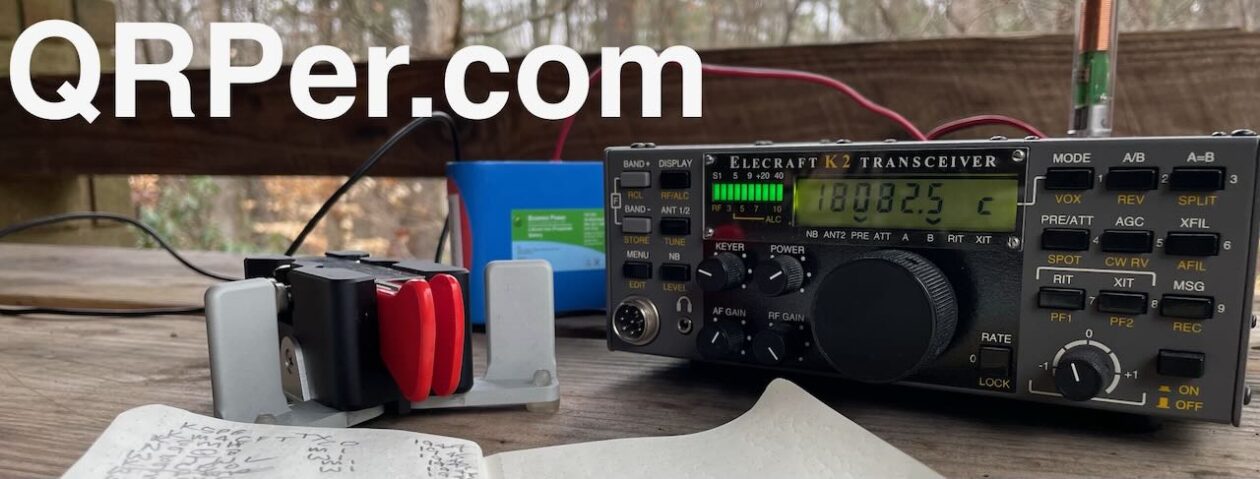This field report picks up where we left off after my last post earlier this week at Lake Alma State Park (May 14, 2025).
Eric and I planned to hit two parks en route to Dayton, Ohio. Lake Alma was a successful park number one. The next park we planned to activate—another new-to-me park—was Great Seal State Park.
The skies opened up beautifully during our Lake Alma activation, so the drive to Great Seal was under clear, sunny skies.
Great Seal State Park (US-1954)
 We arrived at the park around 11:45 AM EDT.
We arrived at the park around 11:45 AM EDT.
Great Seal State Park is tucked away in the hills just outside of Chillicothe, Ohio, and it’s steeped in early state history. In fact, the park gets its name from the Great Seal of the State of Ohio, which was inspired by this very landscape. Back in 1803, when Ohio was becoming a state, early leaders—including Thomas Worthington—looked out over the sunrise from Mount Logan and used that iconic view as the backdrop for the state seal: rolling hills, a rising sun, a bundle of arrows, and a sheaf of wheat symbolizing Ohio’s natural beauty and agricultural roots.
This area also has deep Indigenous history. Before statehood, the Scioto River Valley was home to the Shawnee, with several towns named Chillicothe located nearby. Later, Chillicothe became Ohio’s first state capital. These hills have seen a lot of history, and today I’m sure they make for some incredibly scenic and rewarding hikes.
Eric and I didn’t have enough time in our schedule for a hike that afternoon, but if I pass by here again, I’ll make time for one.
We first made our way to the main picnic area of the park but quickly discovered a large outdoor gathering for local utility workers. They absolutely filled that part of the park, so we checked out the campground area instead.
The campground was completely void of campers, so we felt it would be safe to set up without any issues. It was a beautiful site with numerous options for station setup.
 I found a camping spot and parked there.
I found a camping spot and parked there.
We decided I would set up at the picnic table at the site while Eric would use his folding chair and my Chelegance MC-750 antenna in the central island of the campground.
 Poor Eric, though. When I started filming my activation video, I realized just how close we were to each other—and how much interference that could cause. I walked over to him (camera in hand) and helped him move a bit farther away.
Poor Eric, though. When I started filming my activation video, I realized just how close we were to each other—and how much interference that could cause. I walked over to him (camera in hand) and helped him move a bit farther away.
As I was setting up my gear, Eric came back to my site and said the fellow doing the lawn mowing was about to work in the area where he had originally set up. So, Eric moved—again—a few campsites down from me. This time, he decided to use his fiberglass Jackite pole to support a random wire antenna.
 This actually worked out quite well—the distance between us was just enough that we didn’t interfere with each other at all.
This actually worked out quite well—the distance between us was just enough that we didn’t interfere with each other at all.
Gear
 Note: All Amazon, CW Morse, ABR, Chelegance, eBay, and Radioddity links are affiliate links that support QRPer.com at no cost to you.
Note: All Amazon, CW Morse, ABR, Chelegance, eBay, and Radioddity links are affiliate links that support QRPer.com at no cost to you.
Radio
- Penntek TR-45L “Skinny”
Antenna System and Throw Line
- MW0SAW’s Homebrew 40M EFHW built on a SOTAbeams Winder
- ABR Industries 25’ RG-316 cable assembly with three in-line ferrites (Use Coupon Code ABR10QRPER for 10% Discount!)
- Weaver arborist throw line/weight and storage bag
Key/Cable
- CW Morse “Pocket Paddle”
- Key cable: Cable Matters 2-Pack Gold-Plated Retractable Aux Cable – 2.5 Feet
Pack/Cover
Battery
Logging
Camera and Audio
- DJI OSMO 4 action camera with Joby Telepod Sport Tripod
- DJI Wireless Microphones
On The Air
 I hopped on 20 meters and started calling CQ POTA. Fortunately, as with our earlier activation, the band had a little life in it. Continue reading En Route To Dayton: WD8RIF and I Activate Great Seal State Park near Chillicothe, Ohio
I hopped on 20 meters and started calling CQ POTA. Fortunately, as with our earlier activation, the band had a little life in it. Continue reading En Route To Dayton: WD8RIF and I Activate Great Seal State Park near Chillicothe, Ohio
















































































